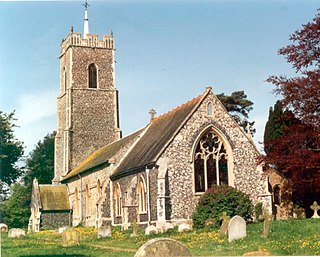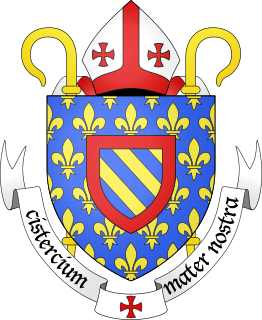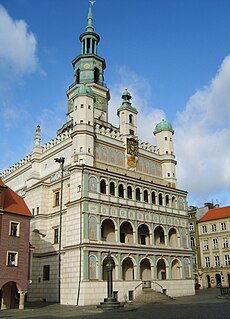
Viscount Downe is a title that has been created twice in the Peerage of Ireland. The first creation came in 1675 for William Ducie. However, the title became extinct on his death in 1679. The second creation came in 1680 for John Dawnay. He had earlier represented Yorkshire and Pontefract in the English House of Commons. His son, the second Viscount, also represented these constituencies in the House of Commons. His grandson, the third Viscount, sat as a Member of Parliament for Yorkshire but died from wounds received at the Battle of Campen in 1760. He was succeeded by his younger brother, the fourth Viscount, who represented Cirencester and Malton in Parliament.

Campsea Ashe is a village in Suffolk, England located approximately 5 miles (8 km) north east of Woodbridge and 6 miles (10 km) south west of Saxmundham.

Newton-on-Ouse is a village and civil parish in the Hambleton district of North Yorkshire, England, about 7 miles (11 km) north-west of York. It lies on the east bank of the River Ouse

Denchworth is a village and civil parish about 2.5 miles (4 km) north of Wantage. It was part of Berkshire until the 1974 boundary changes transferred the Vale of White Horse to Oxfordshire. The 2011 Census recorded the parish's population as 171.
Amesbury Abbey was a Benedictine abbey of women at Amesbury in Wiltshire, England, founded by Queen Ælfthryth in about the year 979 on what may have been the site of an earlier monastery. That foundation was dissolved in 1177 by Henry II, who founded in its place a house of the Order of Fontevraud, known as Amesbury Priory.

Ingress Abbey is a Neo-gothic Jacobean-style country house in the hamlet of Greenhithe, Kent, England. It was built on the Ingress Estate, owned by the Viscount Duncannon in the 18th century.

King's Mead Priory was a Benedictine Priory situated west of Derby, in the area currently known as Nun's Street, or Nun's Green. It was the only Benedictine Nunnery in Derbyshire.

Langley Priory is a former Benedictine nunnery in Leicestershire, England. It is located around a mile and a half south of East Midlands Airport; around a mile from the village of Diseworth. Population figures are included in the civil parish of Breedon on the Hill.

Carrow Abbey is a former Benedictine priory in Bracondale, southeast Norwich, England. The village on the site used to be called Carrow and gives its name to Carrow Road, the football ground of Norwich F.C., located just metres to the north. Granted by charter of King Stephen, the abbey was founded ca. 1146, and became a Grade I listed building in 1954.

Ellerton in Swaledale Priory was a Priory of Cistercian nuns in the parish of Ellerton Abbey, North Yorkshire, England. It was established by the Egglescliffe family in the late 12th century. In 1342 it suffered badly at the hands of marauding Scots, who are described as having razed and despoiled the Priory. The priory was formally surrendered to the Crown in August 1536 and dissolved in the following year. The site is a scheduled Ancient Monument and parts of the priory are grade II listed.

Farewell Priory was a Benedictine nunnery near Lichfield in Staffordshire, England. Although it received considerable episcopal support, it was always small and poor. It was dissolved in 1527 as a by-product of Cardinal Wolsey's scheme to establish a college within Oxford University.
Pinley Priory, also called Pinley Abbey, was a Cistercian nunnery in the parish of Rowington in Warwickshire, England. It was founded in the early 12th century and dissolved in 1536.

Esholt Priory was a Cistercian priory in West Yorkshire, England. Esholt Hall now stands on the site of the priory.

Cowick Hall is a 17th-century Georgian country house in the town of Snaith, located between the villages of East and West Cowick, in the East Riding of Yorkshire, England. The house is Grade I listed and several outbuildings on the estate are Grade II listed. Once home to the Viscounts Downe, today it serves as the corporate headquarters of chemical company Croda International.




















